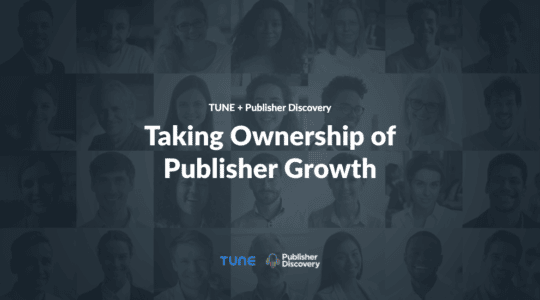There are two kinds of people: those who install ad blockers and those who don’t. Although the former group represents only 5 percent of Internet users globally, there is little doubt that more and more online users will install ad blockers in the coming years. According to the Wall Street Journal, in 2015 online ad spending will reach $171 billion, a significant 18 percent jump up from the previous year. Conversely, AdBlocker Plus reports over 300 million downloads. As advertising moves online and more digital publishers embrace different forms of ads (videos, traditional banner, and pop-ups), both advertisers and consumers will begin to engage in a tug-of-war for desktop and mobile screen space.
This is challenging for publishers—producing content costs money, but the best way to attract visits and engagement with content is by making it free, thereby necessitating ad dollars so the publisher can remain a viable business. (Putting content behind paywalls has not yet proved to be viable for most publishers.) This is also a challenge for advertisers working with performance marketing publishers—even though they only pay when an action is taken, fewer views on their offers results in fewer conversions overall. As for the users, they cite reasons like slow page speeds, intrusive ads, and concerns about third-party tracking as the reasons for installing ad blockers.
What does this mean for performance marketing? There are a few topics to know in the ad blocker debate to help best navigate this when managing campaigns:
Ad Blocking Startups
If a market is ripe for disruption, you better believe a startup exists to try to solve the problem. Ad blocker startups have gained early traction by helping consumers get rid of unwanted display and pop-up ads on desktops at home and at work. Many are free to use, can be easily downloaded, and work across multiple browsers.
On the flip side, there are also startups helping publishers and advertisers see which ads are being blocked, and providing solutions to bypass ad blocking software. Publishers and advertisers can use these tools (or create their own) to add supplemental ads with messages directed toward users asking them to turn off ad blocking software.
The Mobile Dilemma
Publishers and supply-side networks have an even stronger motive to focus on mobile marketing, where more and more ad dollars are shifting. However, a potentially seismic event is fast approaching. With the iOS 9 update (scheduled for release in September), Apple will begin to allow developers to create ad blocking software for iPhone and iPad users for the first time. Although ad blockers have been available on Android for quite a while now, this new change in the mobile advertising landscape could have major ripple effects.
This is not necessarily a bad thing. We’ve all likely experienced the frustration of a mobile website loading at a snail’s pace, or even grinding to a halt due to the proliferation of scripts running in the background (many of them are indeed ads). If advertisers and publishers can find a way to solve this technical issue, I think they will find that users are much more willing to surf the mobile web without the use of ad blockers. In most cases, it’s not the ads themselves that users are opposed to; just slow loading websites.
The real potential in mobile is for advertisers and publishers to take advantage of native iOS and Android apps. These apps can provide unique advertising experiences (free of ad blockers) while still delighting users with fast load times and engaging content.
Native Advertising
Native advertising (also called sponsored content) is the bread and butter of some of today’s biggest digital publishers. According to Business Insider, spending on native ads will reach $7.9 billion this year and grow to $21 billion by 2018. Ad blockers have a much harder time blocking native ads than traditional display and pop-up ads due to the fact that native ads are designed to mimic the typical content on a publisher’s site.
What should ad networks do?
Taking advantage of new and evolving ad formats in today’s industry is key. While the proliferation of ad blockers can seem daunting, nobody is thrilled at the thought of paying for all the content they consume on the internet. This is an opportunity for publishers, advertisers, and even ad networks to contribute to a future where users see more relevant ads and engage with them in meaningful ways.
Here are our top four tips for navigating the ad blocking waters successfully:
- Focus on mobile apps and mobile app developers to utilize some of the ad formats they have available in addition to campaigns that drive user acquisition and re-engagement.
- Explore native advertising. With such a heavy emphasis on and investment in this area, it is bound to create new experiences, ad formats, and opportunities for publishers to work with advertisers.
- Target the right ads to the right users. This will help reduce pushback from consumers and give them less reason to use ad blockers.
- Consider international expansion. It will take a while for ad blockers to make their way into the global landscape. There are many opportunities worldwide where advertisers can continue to focus on emerging markets where ad blockers still have not reached critical mass.
Discouraging an environment where users are badgered by offers and ads that aren’t of interest to them only stands to benefit the industry. Who knows? Perhaps we will look back on this issue in a few years’ time and chuckle to ourselves at the lousy excuse for digital ads we used to deal with.
Do you think ad blockers are the future? Leave your comments below.
Like this article? Sign up for our blog digest emails.
Author
Josh Todd, TUNE's VP of Product, is an innovative product management leader with 12 years of experience in the partner marketing industry. Prior to TUNE, Josh ran an early mobile-focused affiliate network, wrote a marketing blog, and generated thousands of leads for advertisers via targeted media buys.




Leave a Reply
You must be logged in to post a comment.